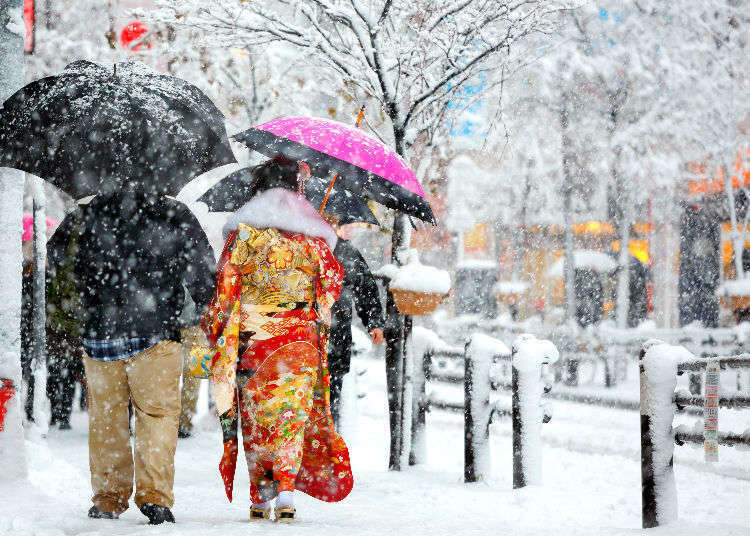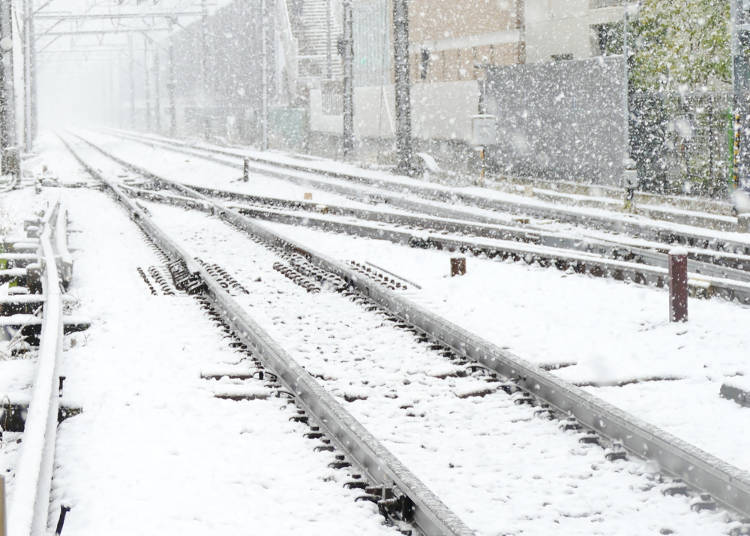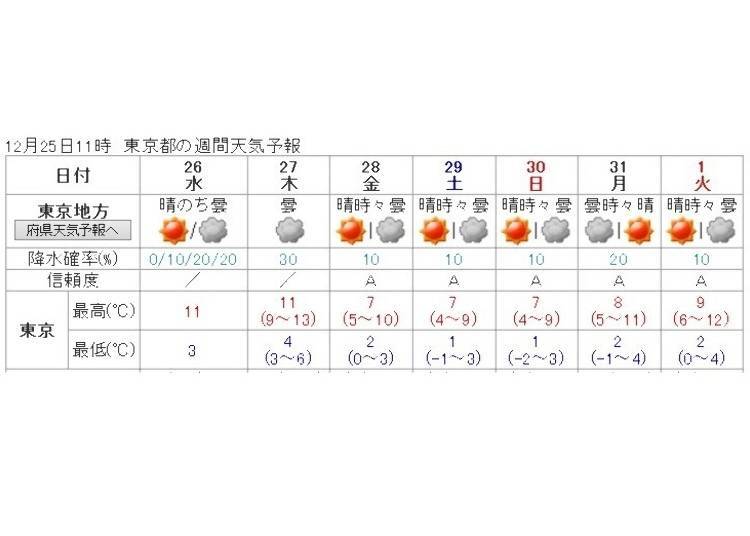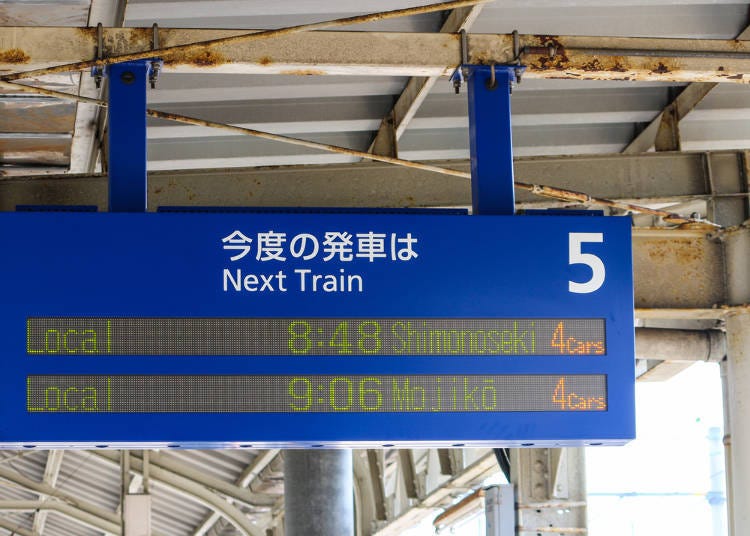
Japan is the perfect destination for winter snow! Skiing, hot springs, and gourmet food make winter in Japan rich and varied. For those living in warmer climates, the pristine snowscapes are the stuff of dreams. However, snowfall can significantly disrupt daily life in Japan, seen as a nuisance by locals.
While snow is less likely in Tokyo, facing the Pacific, even a light dusting can cause major disruptions in the capital's transport network, making travel difficult and dampening spirits, potentially forcing itinerary changes. Thus, preparation is crucial! Below, LIVE JAPAN's editors have compiled what you need to know and do when encountering heavy snow!
When is Snow Most Likely in Tokyo?

According to the Tokyo District Meteorological Observatory's "Climate of Tokyo" data and investigations by the Japan Meteorological Agency, Tokyo averages 9.7 snow days per year between 1981 and 2010, with February leading at an average of 3.7 days, followed by January with 2.8 days, and March with 2.2 days. The days most likely to experience snow are February 17th and 18th, with about ten recorded instances of snowfall.
Although not every snowfall in Tokyo results in accumulation, due to the low probability of snow in the capital region, combined with the density of train routes and the difficulty of maintenance, installing snow melting devices on railways faces significant challenges. Consequently, trains must slow down or reduce service to avoid collisions, and snow removal, often manual, is time-consuming and labor-intensive. Even a small amount of accumulation can significantly delay the return to normal train service, making snowfall a primary cause of transportation disruptions in Tokyo.
- Annual average number of snow days from 1981 to 2010
- Average of 9.7 days
- Month with the highest average: February
- Average of 3.7 days
- Second highest month: January
- Average of 2.8 days
- Third highest month: March
- Average of 2.2 days
So, How Do You Read Japanese Weather Forecasts?

The Japan Meteorological Agency is known for its high accuracy in forecasts. Before planning any trip to Japan, it's best to check their website for the latest weather updates! The website offers interfaces in Japanese and English, facilitating easy access for international travelers. Here, we also introduce some commonly used terms in Japanese weather forecasts.

- 天気予報 (てんきよほう, tenki yohō)
- Weather Forecast
- 週間天気予報 (しゅうかんてんきよほう, shūkan tenki yohō)
- Weekly Weather Forecast
- 降水確率 (こうすいかくりつ, kōsui kakuritsu)
- Chance of Rain
- 最低気温 (さいていきおん, saitei kion)
- Lowest Temperature of the Day
- 最高気温 (さいこうきおん, saikō kion)
- Highest Temperature of the Day
- 晴れ (はれ, hare)
- Sunny
- 晴れ時々曇 (はれときどきくもり, hare tokidoki kumori)
- Partly Sunny, Mostly Cloudy
- 曇 (くもり, kumori)
- Cloudy
- 雷 (かみなり, kaminari)
- Thunder
- 雨 (あめ, ame)
- Rain
- 大雨 (おおあめ, ōame)
- Heavy Rain
- 小雨 (こさめ, kosame)
- Light Rain
- 雹 (ひょう, hyō)
- Hail
- 雪 (ゆき, yuki)
- Snow
- 大雪 (おおゆき, ōyuki)
- Heavy Snow
- 小雪 (こゆき, koyuki)
- Light Snow
- 荒れた天気 (あれたてんき, areta tenki)
- Stormy Weather
The Japan Meteorological Agency's website offers more than just weather forecasts. It provides comprehensive data on rainfall, snowfall, snow accumulation, and historical weather information. When it comes to mobile apps, Japan has several weather apps available, such as the "Yahoo! Weather APP." Each app offers similar content, so choosing one based on personal preference and usage habits is advisable.
What to Do If it Snows? What Areas Require Special Attention?
1. Itinerary Planning

If there's a chance of snow during your travel period, it's wise to have multiple backup plans, like opting for indoor sightseeing/shopping or visiting attractions within walking distance from your accommodation to avoid the dilemma of being stuck on a train and unable to return to your hotel. Some attractions and businesses may close early due to snow, so keep that in mind. Additionally, if there's enough snow, building snowmen and having snowball fights outdoors can be great fun, just be careful not to disturb those around you who may be clearing the snow.
2. Check Transportation Conditions

When planning your itinerary, check the weather conditions online in advance. Before heading out, confirm with your airline whether flights are operating normally to avoid making a wasted trip, and consider purchasing travel insurance for emergencies. When in Japan, keep an eye on television broadcasts, airline official websites, or online news for updates, and use mobile apps for train operation information to stay informed about the status of various transportation services. If you unfortunately encounter snow on your day of departure, make sure to leave for the airport early or consider changing your flight, as missing your plane due to snowfall can be a significant inconvenience.
Most train stations and platforms have electronic boards displaying train arrivals, destinations, and times. If the board doesn't show a schedule, it might indicate train delays or reduced service. In severe cases, station entry may be limited, and boarding a train might result in not reaching your destination after a long wait. Adjusting your plans accordingly is a safer option.
- 列車遅延 (れっしゃちえん, ressha chien)
- Train Delay
- 運転見合わせ (うんてんみあわせ, unten miawase)
- Temporary Suspension, Resumption Depending on the Situation
- 運転再開 (うんてんさいかい, unten saikai)
- Resumption of Service
- 終日運休 (しゅうじつうんきゅう, shūjitsu unkū)
- All-day Suspension
- ダイヤ乱れ (ダイヤみだれ, daiya midare)
- Schedule Disruption
- 欠航 (けっこう, kekkō)
- Flight or Ferry Cancellation
- 閉鎖 (へいさ, heisa)
- Airport or Terminal Closure
By using a train-specific route guidance app (like Navitime), not only can you check train schedules and transfer information, but you can also quickly grasp the current operating status of trains directly through the app.
What Should You Be Careful of When Going Out on a Snowy Day?

Dress Warmly
Many people think snow is cold, but actually, the coldest time is when the snow is melting. Make sure to dress warmly when going out. Japan's indoors and trains are heated, so dressing in layers, like an "onion-style," is advisable. Wear gloves, scarves, beanies, earmuffs, or masks to protect exposed skin from frostbite. Carry rain gear with you, switch to rubber-soled snow boots or shoes with anti-slip features for footwear. Rain boots are a great choice if you're worried about getting wet, and using heat packs can make you unbeatable against the cold.
Walk Carefully
Besides keeping warm, be extra cautious when walking as snow that hasn't fully melted or has turned to ice can be very slippery. Walk with your center of gravity slightly forward, take small steps and move slowly to avoid icy surfaces. Keep your hands out of your pockets for balance, be wary of falling snow from roofs, and try not to cycle. If driving, use snow chains for extra grip and reduce speed.
And Don't Forget These Tips!
The batteries of mobile phones, cameras, and other electronic devices are quite sensitive to temperature changes and may run low on power quickly in cold weather. It's advised to carry spare batteries or minimize outdoor use of these devices. Additionally, since drinking hot water is not a common practice in Japan and hot water facilities are scarce, carrying a thermos to stay hydrated is recommended.
A trip to Japan doesn't have to be overly concerned with the weather. With proper mental preparation, allowing ample travel time, taking cold-weather precautions, utilizing online search tools, and being adaptable, you can have a safe and enjoyable trip!
*Prices and options mentioned are subject to change.
*Unless stated otherwise, all prices include tax.
Popular Tours & Activitiess
Recommended places for you
-

ISHIDAYA Hanare
Yakiniku
Kobe, Sannomiya, Kitano
-

Kambei Sannomiyahonten
Yakiniku
Kobe, Sannomiya, Kitano
-
Appealing

Rukku and Uohei
Izakaya
Sapporo / Chitose
-

Jukuseiniku-to Namamottsuarera Nikubaru Italian Nikutaria Sannomiya
Izakaya
Kobe, Sannomiya, Kitano
-
Goods

Yoshida Gennojo-Roho Kyoto Buddhist Altars
Gift Shops
Nijo Castle, Kyoto Imperial Palace
-

Kanzenkoshitsuyakinikutabehodai Gyugyu Paradise Sannomiya
Yakiniku
Kobe, Sannomiya, Kitano
-

Enjoy Japan's Gorgeous Winter Lights! Ride the Romancecar to Shonan no Hoseki Illumination
by: Guest Contributor
-
Ad

Preserving the Beauty of World Heritage Site Shirakawa-go for the Future Through Responsible Travel
-

Tokyo City Pass Upgrade: Harry Potter Studio Tour & Top Sights up to 85% Off
by: Guest Contributor
-

A Travel Game Changer! Go Hands-Free Between Tokyo and Kyoto with LUGGAGE EXPRESS by JTB and JR Tokai
by: Guest Contributor
-

Keisei × Keikyu 16-Temple Goshuin Tour: Discover Deeper Tokyo & Yokohama
by: Guest Contributor
-

New Seibu L00 Series Launching in 2026! What to See Along the Tokyo-Area Golden Route
by: Guest Contributor
-

3 Best Hotels in Kobe, Japan with Amazing Views of Kobe Bay!
-

Osaka Travel Service Center: So Many Incredibly Convenient Services - in English!
by: WESTPLAN
-

Where to Stay in Noboribetsu Onen: 6 Ryokan Hotels in Hokkaido's Spa Wonderland
by: Masakazu Yoshida
-

Sendai Winter Weather Guide (December–February) + Local Editor's Outfit and Travel Tips
by: Nemi Lin
-

4 Fun Winter Day Trips From Tokyo: Onsen, Snow & More
-

Japan Braces for Snowstorm Shock Thru January 10—Here's How to Travel Safely
- #best sushi japan
- #what to do in odaiba
- #what to bring to japan
- #new years in tokyo
- #best ramen japan
- #what to buy in ameyoko
- #japanese nail trends
- #things to do japan
- #onsen tattoo friendly tokyo
- #daiso
- #best coffee japan
- #best japanese soft drinks
- #best yakiniku japan
- #japanese fashion culture
- #japanese convenience store snacks













